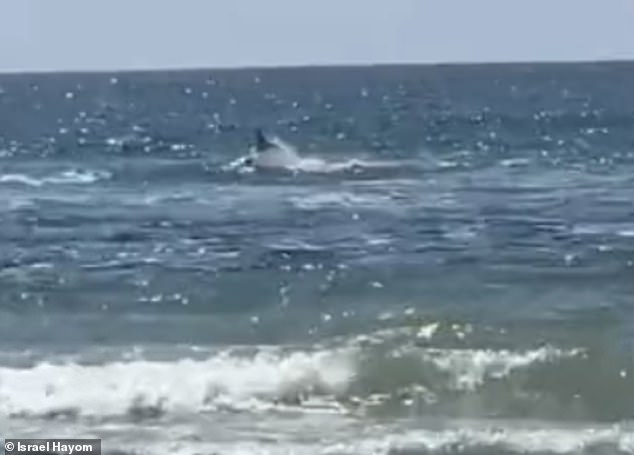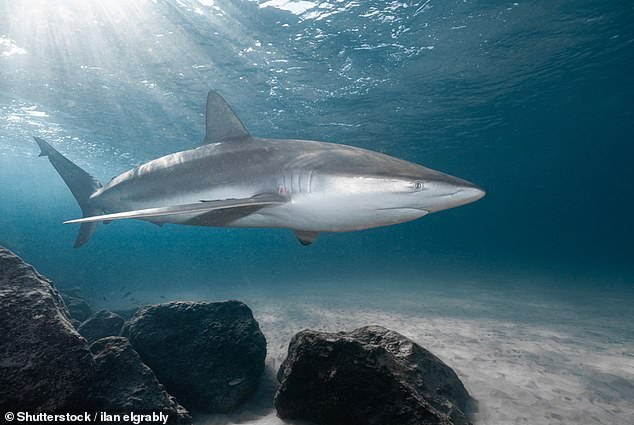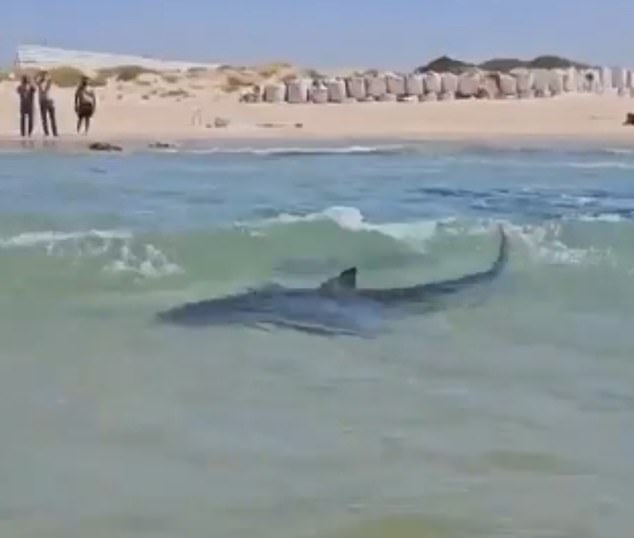It was once considered a harmless species.
But scientists have issued an urgent warning over Dusky sharks, following a fatal attack on a man in Israel.
In April, Barak Tzach, 40, was on his way home from work when he decided to go fishing on Olga Beach, Hadera.
But the father–of–four was brutally mauled by sharks after swimming out into the sea, with horror footage capturing his final moments as he thrashed around in the water.
At the time, the species responsible for the attack remained a mystery.
Now, scientists from PSL University in Paris have identified the deadly creatures as Dusky sharks.
Measuring up to 12ft long and weighing in at 350–400lbs, Dusky sharks are ferocious carnivores – but have not been documented attacking humans before.
‘The fatal shark attack on a male tourist in Hadera (Oriental Mediterranean coast) in 2025 involved several Dusky sharks (Carcharhinus obscurus), a species not considered to be traumatogenic to humans,’ the researchers, led by Eric Clua, said in their study, published in Ethology.

In April, Barak Tzach, 40, was on his way home from work when he decided to go fishing on Olga Beach, Hadera. But the father–of–four was brutally mauled by sharks after swimming out into the sea, with horror footage capturing his final moments as he thrashed around in the water

At the time, the species responsible for the attack remained a mystery. Now, scientists from PSL University in Paris have identified the deadly creatures as Dusky sharks
Mr Tzach had visited the beach equipped only with a mask, snorkel, fins and a GoPro camera, according to his family.
‘He went into the water to dive and photograph sharks, not to feed them or play with them,’ they told Israel National News at the time.
‘In a conversation I had with a fisherman who witnessed the incident, I was told that he swam alongside the shark and later moved a little further out.
‘He photographed the sharks from a distance, but did not touch them or feed them.
‘When they started getting too close to him, he used the stick of the GoPro camera to gently push them away.’
While several people filmed the attack, it wasn’t until the day after that Mr Tzach’s remains were recovered ‘in very small quantities’ – leading to the conclusion that he had been devourved by ‘several’ sharks.
In their new study, the team analysed witness interviews and footage to understand why these Dusky sharks might have attacked the snorkeler.
Their analysis suggests that Mr Tzach’s GoPro may have initially drawn the sharks in.

Measuring up to 12ft long and weighing in at 350–400lbs, Dusky sharks are ferocious carnivores – but have not been documented attacking humans before

The man wasn’t the only one interested in getting close to the predators off Hadera. Videos shared on social media showed other beach-goers, including children, standing in the water and marvelling at the sharks as they swam around their legs just moments before the man was attacked
‘A video camera, even when stationary, emits a slight electro-magnetic signal which leads certain sharks to identify the source of this signal as a potential prey item, such as a wounded fish in the hand of a spearfisherman.
‘We can legitimately imagine that the sharks frequenting the Hadera area, in addition to the phenomenon of habituation linked to regular access to food provided by humans, have developed a “begging” behaviour that drives them to approach (even to the point of contact for the boldest individuals) humans in order to obtain a food reward.
‘In the presence of these electrical signals, the shark can trigger a reflex/clumsiness bite.’
Given how sharp their teeth are, even a small bite could have caused severe bleeding, which would have only drawn more sharks in, according to the experts.
‘In addition to the olfactory stimulus (linked to the blood), the sound of the bite (through the induced snapping of the jaw) may have rapidly mobilised other sharks in the area,’ they added.
Based on the findings, the researchers suggest that local authorities should consider banning the feeding of sharks by the public, as well as spearfishing in the area.
‘By the mere presence of warm waters, sharks would likely continue to frequent the area, but may remain more distant and inherently be less dangerous towards humans,’ they concluded.
‘The worst solution would be to unselectively eliminate all sharks present in this area in the form of a cull, since the responsibility for this specific incident lies essentially with humans.’

